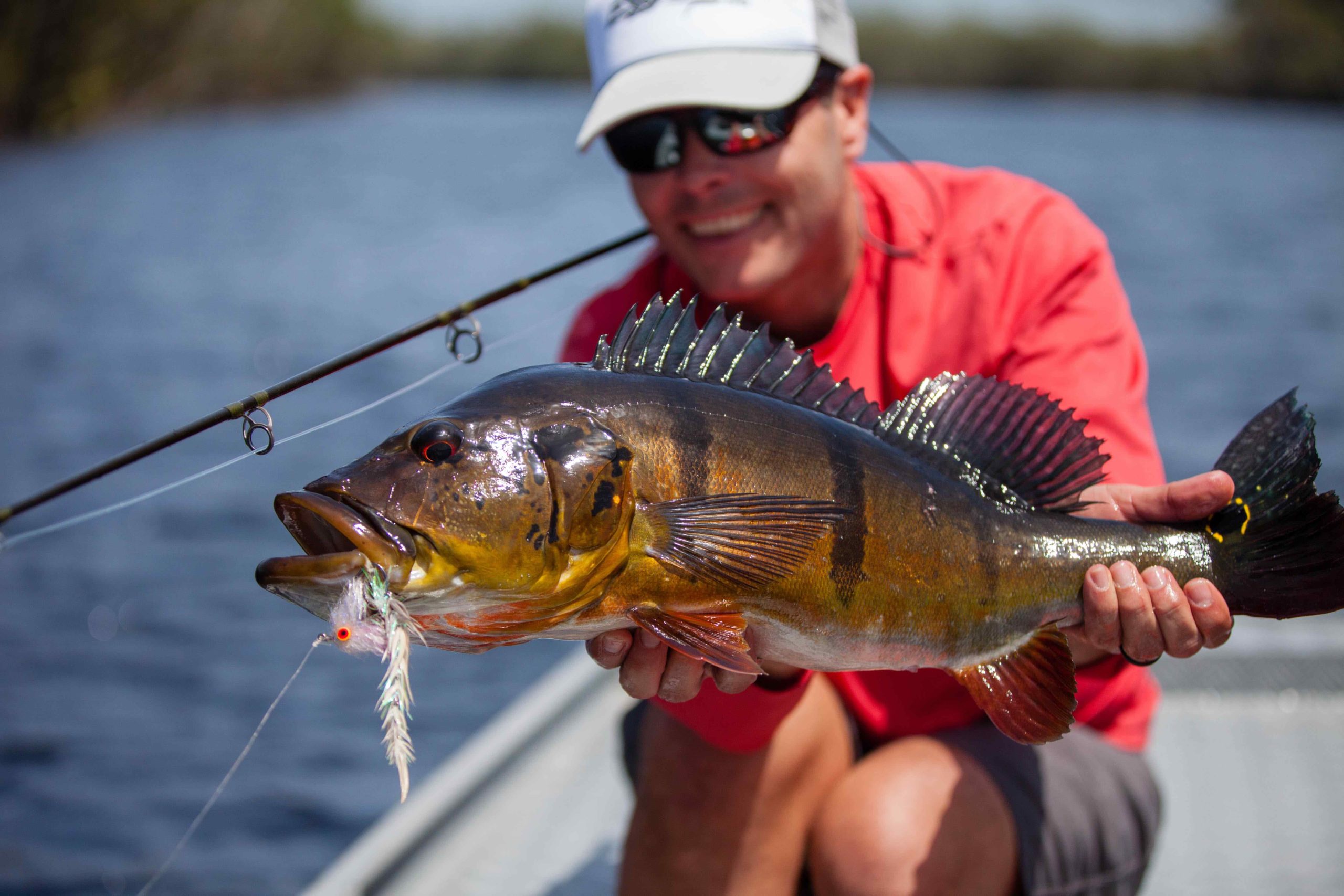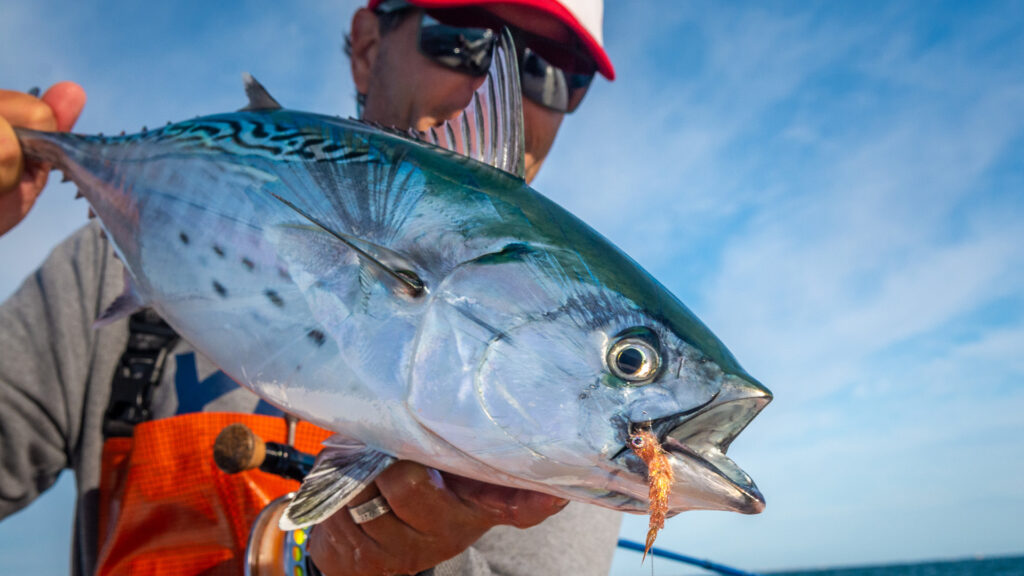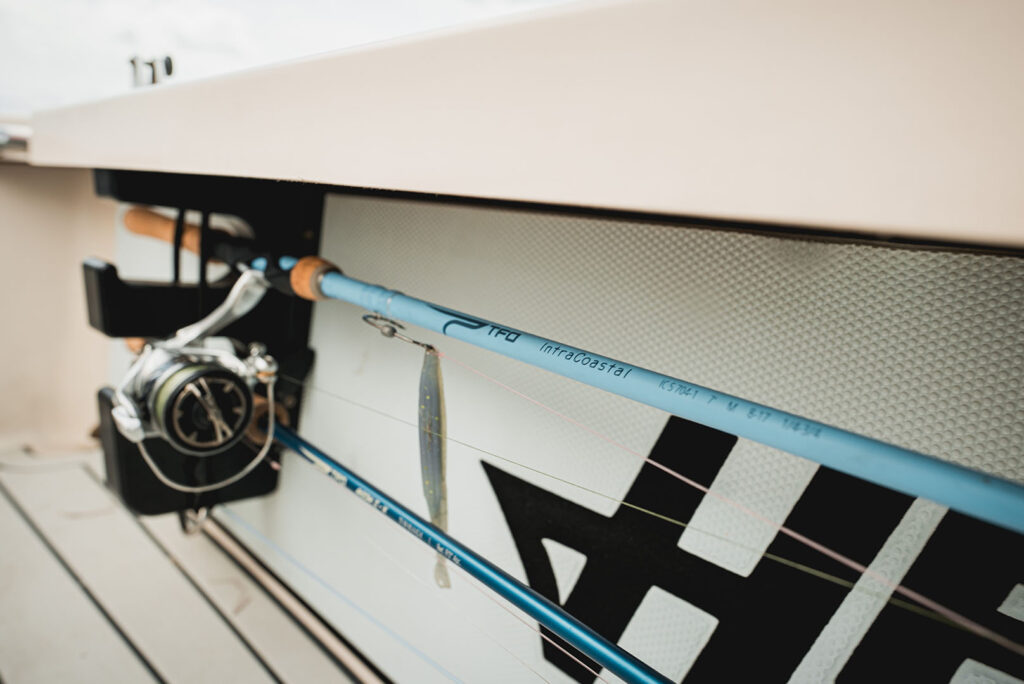I am not, by nature, a morning person. Give me an evening drake hatch over morning tricos any day.
When I lived in West Palm Beach a few years ago, peacock bass fit into my daily routine just fine. I could never get up early enough for morning largemouth bass, but peacocks were usually waiting for me as the afternoon climbed high in the sky.
Peacock bass, native to tropical South America, are alive and well in Florida, which means you don’t have to schlep to the Amazon to catch one. However, if you have a chance to travel abroad for peacocks, do not hesitate to do so. The fishing can be phenomenal.
Closer to home, we have the Florida Keys, which as we know, offer world-class fishing. If you happen to stop in Miami on the way during a bonefish trip, it’s not a bad idea to try your hand at landing a peacock. You won’t need a boat; you won’t need a guide. Here’s what you need to know:
Where to Find Peacock Bass
In the continental United States, you have one option: South Florida. The farther south you go, the better. For instance, you won’t find many peacocks in Palm Beach, but you might find a few in Lake Worth, which is a few miles south. Fort Lauderdale and Miami afford even more opportunities.
The reason: Water temperature. Peacocks need warm, tropical temperatures. Eighty degrees is their sweet spot. Anything lower than 60 degrees and they struggle to survive.
Peacock bass were first introduced to Florida by the Florida Fish & Wildlife Conservation Commission in the mid 1980s to combat the burgeoning population of Oscars, which gorge on juvenile bass. So, in essence, one bass helped another.
The best place to find peacocks is the maze of flood-control canals that cover much of southern Florida. Many are no wider than 40 feet. Most are accessible by foot and are home to baby tarpon, snook and many exotic species — Oscars, tilapia and mayans among others.
How to Fish for Peacock Bass
You don’t have to get up at the crack of dawn. In fact, mid day is often the best time to target peacocks. Look for structure and current. Culverts often produce.
You can blind cast, but I prefer to sight fish. Sight fishing requires stealth and accurate casts. Once the fly has been presented, strip fast. If one hand is not fast enough, try two hands.
The Gear for Peacock Bass
For fly, use a 5 or 6-weight Axiom II rod with a floating line. Some anglers use a sink tip, but I’ve found peacocks usually run pretty shallow, so you don’t necessarily need the extra weight. For leaders, I use a 7 to 9-foot leader with a 10, 12-pound tippet.
South Florida peacocks usually run a few pounds, so you don’t need a heavy-duty reel to land one. However, baby tarpon, carp and snook abound. If you happen to hook one these fish, you will have your hands full. I recommend a Power or BVK reel, just in case.
You’ll likely be fishing in un-mowed, long grass and brush. A stripping basket helps manage excess fly line.
For those who like to spin fish, use a light outfit. TFO’s Trout-Panfish series is a good option.
Flies and lures are fairly straight forward. Clouser Minnows,Dalhberg Divers, Gurglers, Top Dogs and Rat-L-Traps serve as the usual standbys.
Safety
It’s hot in Florida. South Florida stays hot year round. Make sure to stay hydrated. Bring water and your sports drink of choice. Wear comfortable, light-weight clothing with a hat. Polarized glasses offer better visibility and eye protection. Use sunscreen to prevent sunburn.
Walk carefully and keep a close eye out for alligators and snakes. Both try to avoid humans, but if you do see one of these critters, walk around — and away —- from them to ensure a stress-free day of angling.
Questions, comments about peacock bass fishing? Feel free to weigh in on one of social media pages.






